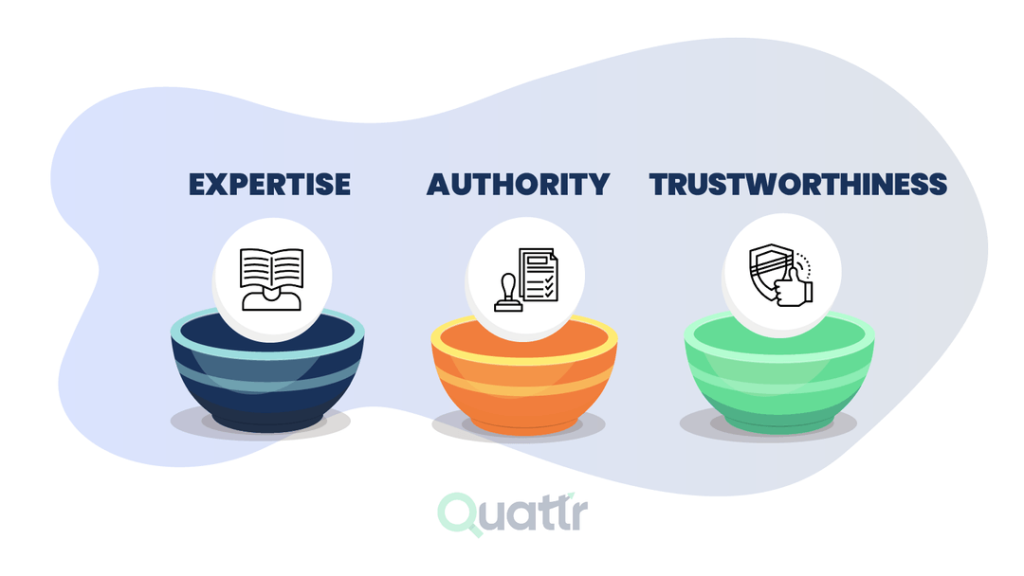
Search engine optimization (SEO) is a constantly changing field, and staying up to date with the latest best practices is essential for any business or organization that wants to succeed in online marketing. One of the most critical factors in SEO is E-A-T – Expertise, Authority, and Trustworthiness. E-A-T is a concept that was introduced by Google as a way of evaluating the quality and relevance of websites in their search results.
As Google’s algorithms have evolved over the years, E-A-T has become increasingly important for website owners and marketers. By demonstrating expertise in your industry, building authority through high-quality content and backlinks, and establishing trust with your audience through transparent communication and customer service, you can improve your website’s E-A-T and boost your search engine rankings.
However, measuring E-A-T can be challenging, as there are many factors that go into evaluating a website’s expertise, authority, and trustworthiness. That’s why it’s essential to use the right tools and metrics to track your progress over time and make data-driven decisions to improve your E-A-T. In this article, we’ll be discussing the importance of measuring E-A-T and tracking your progress over time, as well as the tools and metrics you can use to do so. By using these tools and techniques, you can stay ahead of the competition and establish your website as a trusted authority in your industry.
Google Analytics
Google Analytics is a free tool that can provide valuable insights into your website’s traffic and user engagement. When it comes to measuring E-A-T, there are several metrics you should focus on, including time on site, bounce rate, and pages per session.
Time on site refers to the amount of time that users spend on your website, and it’s an important metric for measuring engagement. If users are spending a lot of time on your site, it’s a good sign that they find your content informative and engaging – which can improve your E-A-T.
Bounce rate refers to the percentage of users who leave your website after only viewing one page. A high bounce rate can indicate that users aren’t finding what they’re looking for on your site, which can be a negative signal for E-A-T.
Pages per session refers to the average number of pages that users view during a single session on your site. If users are viewing multiple pages, it’s a good sign that they find your content valuable and engaging – which can improve your E-A-T.
Google Search Console
Google Search Console is another free tool that can provide valuable insights into your website’s performance in search engine results pages (SERPs). One of the main benefits of Search Console is that it can help you identify and fix E-A-T issues that may be affecting your search engine rankings.
For example, if you receive a manual penalty from Google for E-A-T issues, Search Console will provide details on what specifically needs to be addressed in order to lift the penalty. Additionally, Search Console can provide data on your website’s search engine rankings, including click-through rates (CTR) and impressions, which can be used to monitor your E-A-T progress over time.
Reputation Management Tools
In addition to monitoring your website’s traffic and search engine rankings, it’s also important to keep tabs on your online reputation – as this can be a key factor in E-A-T. Reputation management tools, such as ReviewTrackers and Brand24, can help you monitor online reviews and mentions of your brand.
By monitoring these reviews and mentions, you can gain insights into how your brand is perceived by your audience, and take steps to improve your reputation and authority online. For example, if you notice that your brand is receiving a lot of negative reviews on a particular platform, you can take steps to address the issues that are causing the negative feedback – which can improve your E-A-T in the long run.
Backlink Analysis Tools
Finally, backlinks are another important factor in E-A-T – as high-quality backlinks from reputable sources can improve your website’s authority and expertise. Backlink analysis tools, such as Ahrefs and Majestic, can help you monitor your website’s backlinks and track your link building progress over time.
By monitoring your backlinks, you can identify any low-quality or spammy backlinks that may be negatively impacting your E-A-T, and take steps to remove them. Additionally, you can use backlink analysis tools to identify new link building opportunities – such as guest posting or reaching out to influencers in your industry to secure high-quality backlinks from authoritative sources.
In today’s competitive online landscape, measuring E-A-T is no longer optional. It’s a critical part of any SEO strategy that can make the difference between success and failure. By consistently monitoring your website’s traffic, search engine rankings, online reputation, and backlinks, you can gain valuable insights into your E-A-T progress over time. This information will allow you to take the necessary steps to improve your website’s expertise, authority, and trustworthiness, which in turn can help you to rank higher in search engine results pages.
As a digital agency, we highly recommend using tools and metrics such as Google Analytics, Google Search Console, reputation management tools, and backlink analysis tools to track your E-A-T progress. These tools will enable you to stay on top of your SEO game, identify areas for improvement, and make data-driven decisions to enhance your website’s E-A-T.
In summary, measuring E-A-T is not just an SEO best practice; it’s a critical part of any successful online marketing strategy. By taking the time to measure your E-A-T, track your progress, and make the necessary changes to improve your website’s SEO, you can increase your online visibility, attract more visitors, and ultimately, achieve your business goals. So, don’t wait any longer – start measuring your E-A-T today and take your online marketing efforts to the next level.
Read More!



